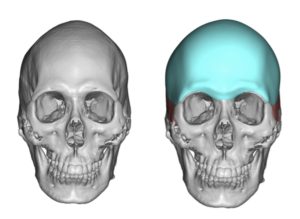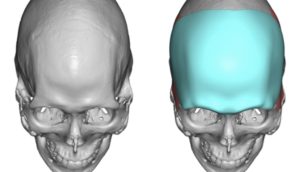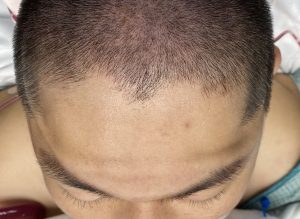Background: The shape of the male forehead is associated with more prominent brow bones and a broader width than that of the female. It can also have more of a backward slope than a female but not excessively so. One of the challenges in male forehead augmentation is when the forehead is excessively narrow (pinched look) along with a backward slope and lack of any brow bone projection. This requires a 3D augmentation approach to such a forehead reshaping which needs to go beyond the forehead area.
Many forehead augmentations do not need to cross the bony temporal lines, the defined side of the forehead where the muscle meets the bone. The desloping needs are often modest and the forehead can be made more vertical without making it wider. But when the sides of the forehead are more sloped than the central forehead, as occurs in the narrow forehead, the augmentation must make the forehead wider. To do so the implant design must leave the bone and be carried over onto the soft tissue of the temporal region where it must also blend into it with a feather edge.
The more sloped the forehead is its correction requires the implant design to go further onto the top of the skull to have a smooth shape. If not then there will be a more acute and unnatural transition between the two skull surfaces. (forehead and top of the head. Only very modest forehead augmentation avoid having to go way behind he hairline.
Like almost all skull augmentations a forehead augmentation must encroach upon at least one additional area (top of head) and often the sides of the head (temporal region) as well to have a smooth shape that looks like it belongs there.



Case Highlights:
1) Forehead reshaping by augmentation is best done by a custom implant in which the design of the slope of the forehead and amount of brow bone augmentation must be balanced with blending into the top and sides of the head.
2) Narrow forehead/head shapes in which the slope of the forehead is reduced have to be widened by crossing over the bony temporal line onto the temporal fascia.
3) A custom forehead-brow bone implant can be placed through a relatively small scalp incision using an endoscope to perform the critical periosteal brow bone releases.
Dr. Barry Eppley
Indianapolis, Indiana










